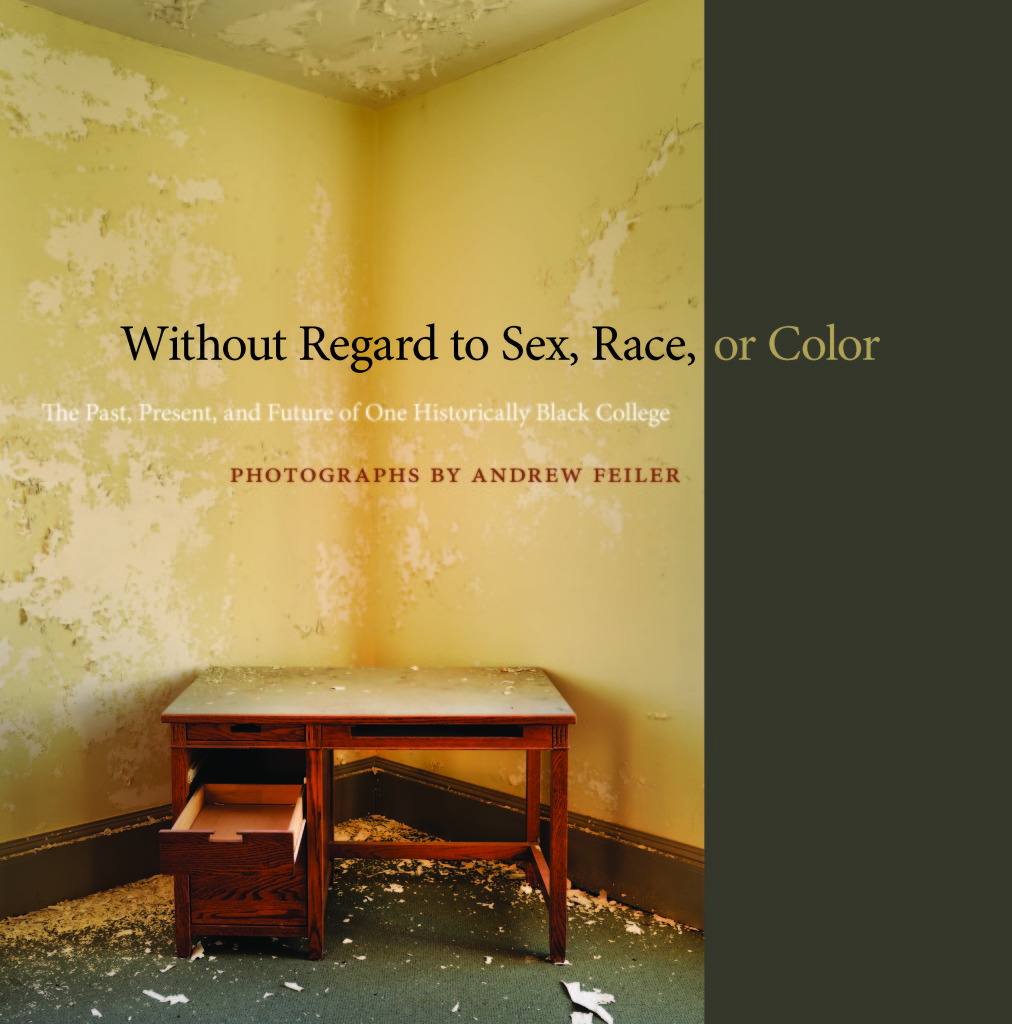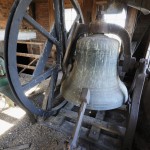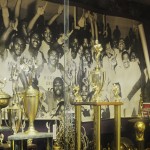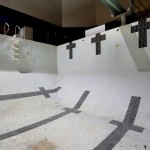Morris Brown College was established in 1881 and opened its doors in 1885 with the creditable vision of providing an opportunity for people of color. Over the course of more than 120 years, the college enrolled tens of thousands of men and women and graduated thousands of them. The college has an honorable roster of alums who have accomplished a great deal in their fields of study and vocations of choice. It is important that we celebrate the accomplishments of this institution of higher education and opportunity, and that we commend the staff, faculties, and administrators who have carried honorably the responsibility for Morris Brown College’s mission “to provide educational opportunities in a positive and nurturing environment that will enable its students to become fully functional persons in our global society . . . to live meaningful and rewarding lives, (and) to make socially constructive and culturally relevant contributions to society.”
The walls, the windows, and the rooms that remain bear little witness to the past, and the remaining facade of Morris Brown College articulates a story of plunder, neglect, and vandalism – a story that rips at the heart strings of each and every one of us. Nevertheless it is a story that has to be shared. Photographers like Andrew Feiler, documentarians, humanities scholars, libraries, and archives are important participants in this storytelling. For they are committed to preserving the evidence and memories of old so that we can use them to influence future activities and decisions that are yet to be made. This is the basis of the humanities, and in the academy these people form the building blocks of learning by providing crucial knowledge of our past.
From the Afterword, Without Regard to Sex, Race, or Color
Loretta Parham
CEO, Atlanta University Center’s Woodruff Library
Chair, Georgia Humanities Council
Nancy McCrary: Good morning, Andrew, and first let me thank you for granting SxSE this interview.
I have to begin by telling you I had no idea Morris Brown was still an institution – even though not currently active as a college – until Without Regard to Sex, Race or Color. How did this project come to you?
Andrew Feiler: Everything in the South has to be viewed through the prism of race. As a fifth-generation Georgian, and having grown up Jewish in the South, I have been shaped by the complexities of the South and of being a minority in the South. History, culture, race, injustice, progress…these are all parts of that complexity. When I read of Morris Brown’s bankruptcy filing it felt like an important story along multiple dimensions. I wasn’t sure where it would lead, but it was a story I wanted to explore.
One of the essential elements of this project was trust. Part of my background is in organizational strategy. In that capacity I have long served on a number of not-for-profit boards helping organizations become more effective. On one of those boards it has been my privilege to serve alongside Dr. Sonny Walker. Dr. Walker is a lion of the Civil Rights Movement and he happens to also serve as vice chair of the board of Morris Brown. At the outset I reached out to Dr. Walker. His support of this endeavor, and his trust in me, came before all others and was indispensable.
NM: These photographs are testimony to the rather vast changes we’ve experienced in a short amount of time in our country – technologically, environmentally, and architecturally. We see chalkboards, construction-paper posters, antiquated science labs, classrooms with wooden furniture – many of these images hark back to a period much earlier than 2002, the year when Morris Brown was last an active college. How long had Morris Brown been in decline before the final bell tolled?
AF: Morris Brown College was founded in 1881, one of the rare historically black colleges and universities (HBCUs) founded by African Americans. Most HBCUs were founded by white philanthropists from outside of the South. Over time, Morris Brown came to be an institution noted for providing college access to the children of families with lesser means. In an America in which college access for African Americans was constrained, Morris Brown welcomed students from the most challenging circumstances.
But over time its finances became increasingly precarious. Over the past two decades several buildings were sold; others were shuttered. And in 2002 tragedy struck. That year the college president and another school official were charged with misappropriating federal funds to keep the school afloat. The federal government cut off student loan money; the school lost its accreditation; the student body almost entirely evaporated. The college hung on in that suspended state until 2010 when Dr. Stanley Pritchett, Sr. became the 18th president of Morris Brown. It was under Dr. Pritchett’s leadership that a path forward was forged.
It’s important to recognize that Morris Brown is not alone among HBCUs in facing fundamental challenges. Many face declining enrollment, rising gender imbalances skewing toward women, lower than ideal graduation rates and, of course, escalating imperatives for philanthropic support. But Morris Brown’s challenges are especially acute as they remain a matter of institutional life or death.
NM: Ruins photography, as with Andrew Moore, Camilo Jose’ Vegara and others, has become a more prominent documentary style of photography. Do you see this work as ruins photography? What benefits would you most like to see Morris Brown realize from the publication of these images?
AF: The Morris Brown and the HBCU stories have many layers. My images have many layers. In the year that I spent on campus shooting this work, I sought out emotional touch points that help illuminate the complexities and surface the broader narrative. The emotions range from pensiveness to pride, from angst to aspiration.
I don’t see this work as merely about ruin. Of course there is sadness. What has happened at Morris Brown is a tragedy. But there’s also hope. One of the themes of this work is that art matters. I believe the Morris Brown of the future will benefit greatly from increased awareness of their past, their present and their future prospects. It is my hope that, through art, folks will find a pathway into the cause of improving educational access for all, whether that be through Morris Brown, other HBCUs or other avenues.
NM: Are America’s HBCUs still relevant? Or perhaps I should ask if this is even a politically correct question? Do we not pride ourselves as a post-racial society where higher education is not thought of in terms of sex, race, or color but as a quality education for all?
AF: As part of this project I did a lot of research on HBCUs and one statistic is striking: The roughly one hundred HBCUs that remain are a mere 3% of colleges in America, but they represent more than 10% of African Americans who go to college and more than 25% who graduate with degrees. To me the key is choice. Faced with a choice, some folks choose HBCUs. It is choice that makes these schools an essential element in building a healthy American middle class.
Another theme in this body of work is that education matters. There is a reason that the HBCUs were founded primarily in the decades immediately after the Civil War. There is a reason that Brown vs. Board of Education is a high-water mark in the Civil Rights Movement. There is a reason that education quality and college affordability are central issues today. Education has been the central means by which we have created a healthy American middle class. That imperative remains just as essential today.
NM: It’s remarkable that the buildings of this institution have stood vacant for 13 years on prime real estate in the middle of one of the fastest growing cities in this country. How have they been able to maintain control of the physical property through these years? What can you tell us about their plans to resurrect Morris Brown on this site? And, how much would a Morris Brown of today resemble the Morris Brown of the 20th century?
AF: The Morris Brown of the future will never resemble the Morris Brown of the past. One of the buildings captured in my work, Sara Allen Quadrangle, was fatally damaged by fire several years ago and was recently demolished. Another, Gaines Hall, was just severely damaged by a fire and may not survive. Several images from Gaines are in my book including the photograph on the cover.
But Morris Brown remains alive and that is an accomplishment. A third core theme of this body of work is that leadership matters. It was a failure of leadership that led to Morris Brown’s downward spiral and crisis. But the story of the college’s survival and emergence from bankruptcy is one of leadership success. Over these past few years, Dr. Pritchett has demonstrated extraordinary patience, persistence and creativity. The fact that Morris Brown is alive today is directly a function of his leadership.
When the college filed for bankruptcy protection the campus encompassed 37 acres and over a dozen buildings. But there was $25 million dollars of debt. The plan outlined by Dr. Pritchett was straightforward: sell off land on the periphery of the campus, pay off the debt and reconstitute the college on the heart of the old campus. That vision drove the sale of the majority of the campus to Invest Atlanta and Friendship Baptist Church.
The college has emerged from bankruptcy. They’re focused on regaining accreditation which will allow students to receive federal loans. They’re focusing their curriculum on a narrowed but impactful selection of majors. They’re raising funds to restore the buildings they’ve retained. And it’s my personal hope that they’ll be able to regain at least two of the buildings that are currently owned by Invest Atlanta, Gaines Hall and Furber Cottage, as these are part of the core of the historic Morris Brown College
Publication for Without Regard to Sex, Race, or Color is set for October, 2015. Books can be pre-ordered from the University of Georgia Press at:
http://www.ugapress.org/index.php/books/without_regard_to_sex_race_or_color/
Autographed or personalized copies can be ordered via the photographer at:
Nancy McCrary
Nancy is the Publisher and Founding Editor of South x Southeast photomagazine. She is also the Director of South x Southeast Workshops, and Director of South x Southeast Photogallery. She resides on her farm in Georgia with 4 hounds where she shoots only pictures.








